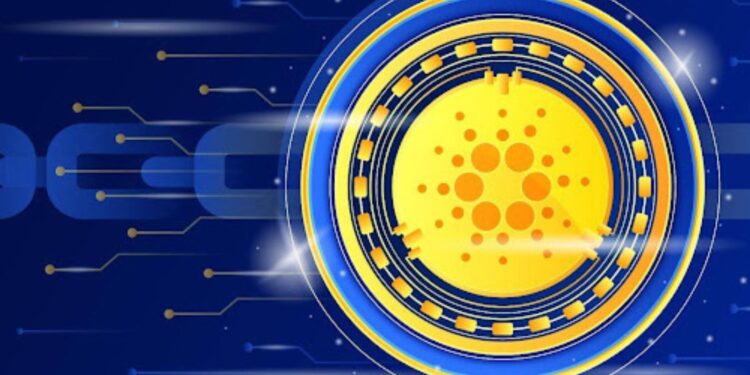Everyone was excited when the gaming space finally welcomed blockchain, one of this century’s most groundbreaking technologies. That inspiring achievement marked the beginning of a new era for gaming, one supported by Web3 and the metaverse, and where possibilities would continue to emerge. Blockchain has undergone significant transformations since its debut, extending beyond its original function as a solution to facilitate financial transactions and applications. It cleared the path for crypto projects such as Cardano to enter the space and contribute to today’s decentralized gaming networks, enabling devs to innovate and boost global player engagement.
Cardano has made huge strides in the gaming industry via initiatives like its association with Unreal Engine, a reliable, live 3D tool from Epic Games, used for developing films, video games, and more. Today, it’s not only traders who are glued to the ADA price prediction that stand to benefit from this technological innovation, but also gamers and game developers, designers, marketers, and houses. What was once confined to the financial realm has expanded into gaming, opening the room to even more innovation. Cardano’s native cryptocurrency, ADA, is used to connect to video games and withdraw payouts, among other practical advantages. More information about Cardano’s involvement in the gaming sector can be found in the sections below.
The Unreal Engine & Cardano, A Game-Changing Move
The Cardano blockchain has become interoperable with both Unreal Engine 4 & 5, via a new plugin that empowers developers to insert blockchain features such as token-gated access, non-fungible tokens (NFTs), native wallet functionality, and in-game trading straight into their creations. This integration aims to streamline devs’ Web3 game development, simplifying how they incorporate Cardano’s functionalities and promoting innovation, attracting new types of gamers as a result.
In-game trading features are key to developing decentralized trading markets that eliminate intermediaries like banks, allowing gamers to purchase, sell, and exchange items directly within the game via blockchain. At the same time, users can manage their transactions more easily with Cardano digital wallets, simplifying both transactions and asset management. The plugin discussed above is designed to transform how users and developers engage with video games, allowing game developers to integrate Cardano capabilities without requiring any specific coding know-how.
Cardano boasts innovative features that can enhance gaming experiences, allowing a broader category of game developers to explore them and boost innovation within gaming systems.
A Quick Note On Unreal Engine
Unreal Engine is a game engine destined for commercial use and created by Epic Games, a frontrunner in interactive entertainment and 3D engine technology. The company operates Fortnite, one of the most popular and played games globally, with over 650MN registered users worldwide according to 2023 findings.

Infinity Blade and Gears of War are other noteworthy titles found on the company’s list, so you can get an idea about how huge of a milestone the integration with Cardano actually is.
Breaking Into The Gaming Industry
Blockchain platforms are increasingly finding their way in today’s ever-evolving gaming space, pushing decentralized web3 gaming into the spotlight. The integration plugin is in developmental stages, but this initiative is a huge stride towards aligning the well-known game development platform’s operations with transaction and wallet functionalities.
GameFi is having a monster year, with projects like The Sandbox, GALA, and Immutable standing out as some of the best tokens in the area. The new plugin also extends support to NFT and token-based projects, giving devs the tools needed to seamlessly integrate blockchain assets and transactions within their Unreal Engine titles.
Such innovations only strengthen Cardano’s position as a competitive force in blockchain gaming and ADA’s standing as a future-oriented token, boosting these two’s value to developers and widening their role across digital ecosystems.
More About Cardano’s Role In Gaming
Some of the numerous undertakings that earned Cardano a place in the gaming industry include its integration into games such as Chronoshot, which can be found at the Epic Games Store, as well as its involvement in the foundation of blockchain-built games – with a focus on play-to-earn titles and NFTs. The emergence of Lovelace Saga, a Cardano-based play-to-earn (P2E) game with in-game rewards powered by the ecosystem’s tokens, as well as the creation of Paima Engine, which leverages the network’s decentralized funding model, further reinforce Cardano’s role in the gaming sector.
Cardano aims to establish itself as a preferred platform for gaming by providing users with the necessary tools, along with an ever-growing collection of game titles, making it easier for enthusiasts to enter the cryptocurrency space. Here’s what recommends Cardano in gaming:
- Cardano’s integration of smart contracts four years ago laid the foundation for DApps, from NFT projects to blockchain-based games;
- Cardano boasts low transaction fees, which are perfect for P2E gaming styles since they support smaller transactions from one game to another;
- Cardano’s ecosystem is steadily expanding, supporting numerous projects and DApps, particularly within the gaming space.
Cardano’s Contribution To Gaming
Cardano is steadily clearing the path for crypto and gaming enthusiasts to enter this double-sided space, making onboarding user-friendly, intuitive, engaging, and most importantly, rewarding. Tools such as Game Engine Wallet, an integration of development tools with the blockchain, give developers access to game engine-based wallet features, allowing for peer-to-peer (P2P) token transactions, alongside other perks. All can be done without needing to leave the game in order to carry out transfers or other activities.
At the same time, the project’s Hydra layer-2 scaling solution, which processes off-chain transactions for a better throughput and reduced latency, has lately delivered remarkable results – that of processing a sky-rocketing 1MN TPS (transactions per second). The Cardano Foundation reported that electricity consumption per year was only 704.91 MWh as of May 2024. It’s worth emphasizing how transparent the network is when it comes to somewhat sensitive topics, such as energy consumption and carbon footprint rates – two aspects that can spark considerable debate.
Endnote
Cardano’s amalgamated advantages, from low environmental impact to speed to user-friendly tools, make it an ideal fit for the ever-growing demand within the gaming ecosystem. Stay close to see what else Cardano is cooking in the oven.













